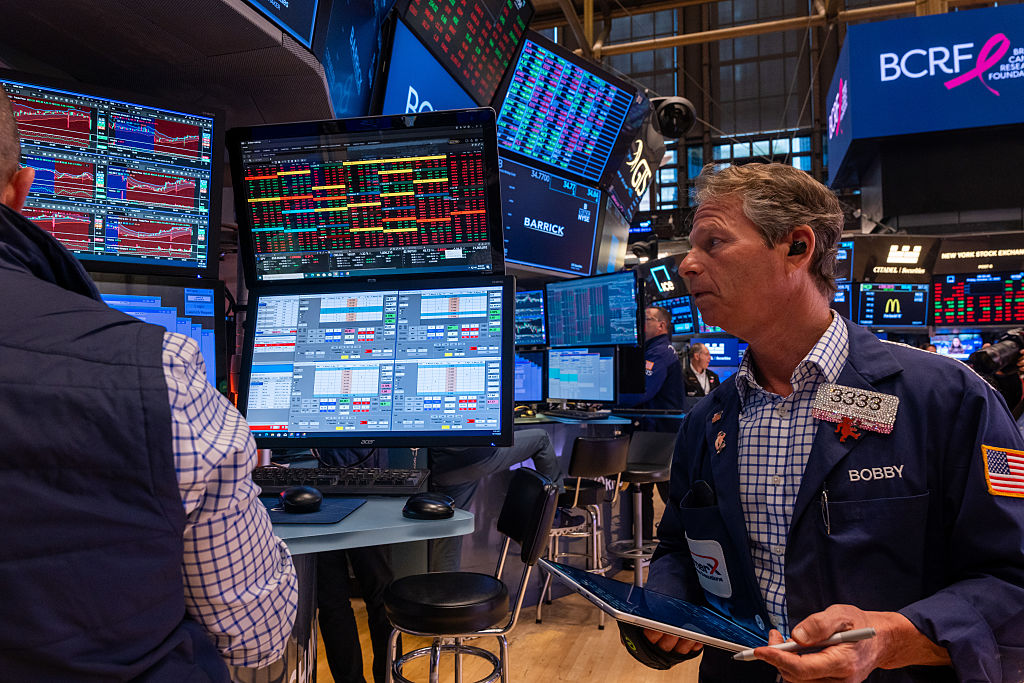Why the US economy is on borrowed time
The US economy is living on borrowed time - and borrowed money. Even if the Federal Reserve tries to avoid recession by cutting interest rates, foreign creditors will not ignore the soaring trade deficit forever, says Dr Hans Sennholz in The Daily Reckoning. Could the current trouble in the Middle East be the trigger to spark a dollar collapse?
The financial world, apparently, is ignoring the trade deficits and the rapidly rising American indebtedness.
Being accustomed to deficit financing, American officials seem to handle them with ease. Even long-term payment rates are remaining exceptionally low.
But many politicians and media spokesmen like to complain about China, especially about its refusal to allow its currency to find a free market rate and thus allow the money market to function freely. They like to look abroad and find fault with foreign demeanour rather than reflect on their own conduct.
MoneyWeek
Subscribe to MoneyWeek today and get your first six magazine issues absolutely FREE

Sign up to Money Morning
Don't miss the latest investment and personal finances news, market analysis, plus money-saving tips with our free twice-daily newsletter
Don't miss the latest investment and personal finances news, market analysis, plus money-saving tips with our free twice-daily newsletter
Former Federal Reserve Chairman Alan Greenspan evidently does not agree with these critics. He has a ready explanation for American balance-of-payment deficits, which constitute by far the biggest maladjustment of the global economy. He believes that such deficits are merely the by-product of a long-term development facilitating the deficits, and that they are the side effect of the ever-increasing importance of the financial industry and its great flexibility.
We do agree with the former chairman that the world economy, and especially world finance, has expanded significantly ever since the disintegration of the Soviet Union and the dissolution of the Soviet bloc of countries. Many trade barriers have come down and capital markets have widened to include all but a few recalcitrants.
But such an explanation of the size of the trade imbalance does not explain its very cause. In fact, central bankers rarely render accurate accounts of the consequences of the policies they conduct.
Ever since the world discarded gold as the standard medium of exchange, the US dollar has served in its stead. And just like gold or any other commodity, the dollar has been moving from places where its market value is low, to places where it is higher. It is sent to all corners of the world, always guided by its purchasing power.
Just as the gold-producing countries usually experienced "unfavourable" balance of payment - that is, the exports of gold exceeded the imports - so does the United States suffer "unfavourable balances," or exports of dollars exceed their return. But while the quantity of gold mined and offered on the market was always rather small, the volume of Federal Reserve notes and deposits, as well as the fiduciary credits resting thereon usually is much larger.
It affects not only international money relations, but also tends to give rise to worldwide business cycles. The Fed has generated numerous boom-and-bust cycles ever since it opened its doors in 1914. The booms are periods of abundant credit that lead to malinvestments, squandering, scarce factors of production, and encourage over-consumption.
In the recessions that are bound to follow, the maladjustments are corrected and the factors of production are employed again for the best possible satisfaction of consumer needs and wants.
Economists like to distinguish among several phases of a business cycle. A central bank launches the first phase by embarking upon money and credit expansion in order to stimulate the economy or finance government budgetary deficits. It may purchase government obligations with money it creates or lower its payment rates, which encourages member banks to borrow funds it creates.
In the second phase, businessmen tend to borrow these funds and embark upon production that hitherto had not been economical. Business is very rewarding and profitable.
In the third phase, feverish activity may cause factor prices as well as goods prices to rise. The spectre of inflation makes its appearance, which may induce monetary authorities to raise their payment rates. But these usually trail actual market rates that are rising - and may even accelerate. During this phase, legislators and regulators like to impose price and wage controls and threaten violators with heavy fines and imprisonment.
In the fourth and final phase, a new central banker facing runaway inflation may have the courage to raise his discount rate to the market rate, which finally balances the demand for funds with the supply of actual savings. At this time, the economic readjustment and correction - that is, the recession - begins. But before it has run its course and properly corrected all maladjustments, the monetary authorities usually launch another cycle.
And where in the cycle are we today? Most symptoms seem to point to the third phase, when goods prices begin to rise and the inflators become inflation fighters.
Surely, consumer goods prices have been rising at modest rates because massive imports from China and other Asian countries have diminished the price pressure. But these countries compete for raw materials and energy products, such as petroleum, which has raised those prices significantly. Moreover, American real estate prices have been soaring, which enabled many homeowners to consume the rising equity and go deeper into debt.
Yet, foreign central bankers and commercial bankers continue to trust the financial structure and invest some of their dollar surpluses in US Treasury obligations. They recently rushed to acquire a large bloc of new 30-year bonds, which obviously helped to support the dollar and hold payment rates at present levels. They simply ignore the massive level of dollar debt and the large maladjustment of the global economy.
The fourth and final phase of the cycle is not yet in sight. However, we must face and get ready for the ordeal that is bound to come at home and abroad. The Federal Reserve may continue to raise its discount rate until it finally reaches the market rate, at which time the readjustments begin.
But even if it should not dare to raise its rate to a level at which the demand for funds is covered solely by genuine savings, the readjustments may commence whenever the distortions come in sight. The readjustment in real estate may already have begun in the form of stagnation and decline in some communities. It may continue to spread as more and more consumers become reluctant to live beyond their means and increase their debt.
The coming readjustments may commence beyond the US.
Some creditors may tire of amassing ever more dollars and supporting the standards of living of a rich and powerful country. They may question the creditability of a debtor who makes no preparation for reducing his debt, but actually continues to enlarge it. Even if no important creditor should unload his dollar claims and seek refuge in some other currency, such as the European euro, the Japanese yen, or Chinese renminbi, the clouds of international conflict seem to be gathering, casting a shadow on all international debtors, especially the biggest and brightest.
In Palestine, which Jordan ceded to Israel after the
1967 war and is inhabited by some 2.5 million Arabs and 250,000 Jews, the most militant Muslim party, called Hamas, recently came to power. It is unlikely that it will call a halt to the bloody Intifadah uprising and suicide bombings in Israel. Encouraged and supported by Muslim fanatics from its kindred neighbours, it may unleash a bloody clash of arms, which soon may trigger a grave crisis of world finance. It surely would bruise and mar the US dollar.
In Iran, the issue of weapons of mass destruction has led to acute tension and confrontation with the European Union and the United States. They still are trying to persuade Iranian authorities to abandon the development of nuclear power and arms, which would constitute a deadly peril to some of its neighbours and especially to tiny Israel.
If they should fail, and Iran edges ever closer to the possession of nuclear arms, there is serious speculation that either the United States or Israel may strike at the country's nuclear bases. Such an assault undoubtedly would enrage the world of 1.3 billion Muslims in 206 countries, and topple the international debt structure that is resting on the US dollar.
There are times when precaution is wise and profitable.
It keeps a watchful eye on present dangers and on things to come.
By Dr Hans Sennholz for The Daily Reckoning
Get the latest financial news, insights and expert analysis from our award-winning MoneyWeek team, to help you understand what really matters when it comes to your finances.
MoneyWeek is written by a team of experienced and award-winning journalists, plus expert columnists. As well as daily digital news and features, MoneyWeek also publishes a weekly magazine, covering investing and personal finance. From share tips, pensions, gold to practical investment tips - we provide a round-up to help you make money and keep it.
-
 Why Trustpilot is a stock to watch for e-commerce exposure
Why Trustpilot is a stock to watch for e-commerce exposureTrustpilot has built a defensible position in one of the most critical areas of the internet: the infrastructure of trust, says Jamie Ward
-
 Tetragon Financial: An investment trust with stellar returns
Tetragon Financial: An investment trust with stellar returnsTetragon Financial has performed very well, but it won't appeal to most investors – there are clear reasons for the huge discount, says Rupert Hargreaves

